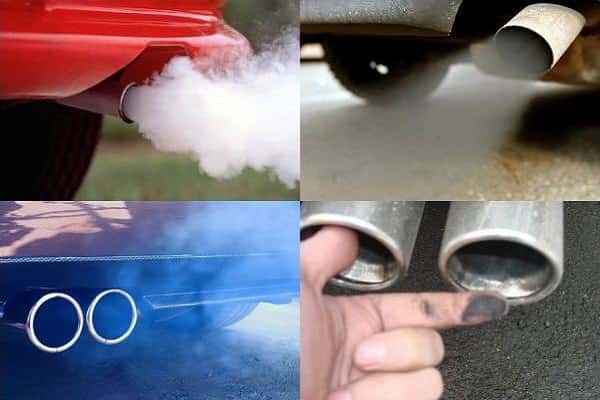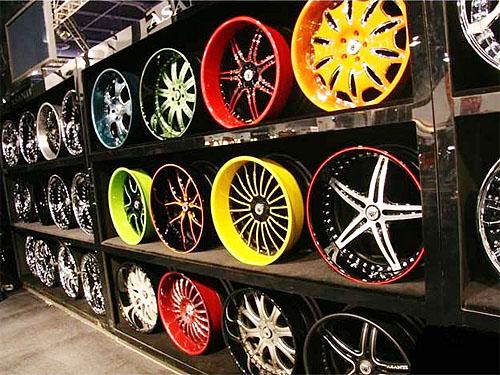
Car ignition wires - transfer current from the battery to the spark plugs. How to replace them?
Content
Ignition cables have been used for many years to supply the electricity generated by the battery to the spark plugs. They are rare in most modern designs, since the coils are implemented directly on the plug, minimizing the need to connect the two elements with high voltage wires. However, in the engines in which they are installed, they play a crucial role - they provide voltage transfer from the ignition finger in the coil to the spark plugs, which ultimately leads to a spark and initiation of ignition. If there is, for example, a puncture in the ignition wires, you will easily notice the symptoms of incorrect operation of the unit.
What kind of ignition cables are currently produced?
If you ask someone who knows a thing or two about electricity, he will tell you that one of the best conductors of electricity is copper. Vehicle manufacturers have followed the same premise from the start. That is why, until a few decades ago, copper ignition wires were the main element of this system. However, over time, the situation has changed, and the reason was the search for more resistant to damage and puncture materials. It has long been known that copper likes to "lose" electricity along the way.
Ignition cables - rating of the best
In addition to the copper core, ferromagnetic elements are also used in high-voltage cables (wire winding). Such components provide greater durability, conductivity and virtually no voltage loss. A steel wire wound on a fiberglass core is responsible for transferring it to the candles.
What ignition wires to buy?
Along the way, you can still find wires with carbon and graphite cores, but their life is very short and is similar to the life of candles. The cheapest wires have PVC insulation, with poor resistance to high temperatures. If you are interested in rating ignition cables and are looking for the absolute best solutions, take a look at those made in the "wire wrap" system. They are the most expensive, but by far the most durable, and this is their huge advantage.
Damaged wires on spark plugs - signs of a malfunction
It is easy to see that something is wrong with the ignition system, because it directly affects the operation of the unit. When the ignition wires are damaged, the engine is usually difficult to start, especially on foggy and wet days. The reason is the violation of the continuity of the insulation and the formation of punctures. If you're lucky (when fogging up on a cold engine, open the hood and watch for a while), you may notice sparks jumping. It's time to replace the high voltage wires. Problems with ignition wires also occur when:
- the ignition goes out;
- fuel does not burn;
- engine runs unevenly.
When does a misfire occur?
Another sign of problems with the ignition wires is a misfire. This may or may not be caused by a wiring problem. Ignition of the mixture, or rather its periodic lack of ignition, can be caused by a suspended nozzle, an increased spark gap on the spark plug, a lean mixture, or incorrect operation of the ignition coil. However, in the event that you notice jerks during acceleration, and the diagnostic computer shows misfires, it is worth looking at the wiring. Ignition wires (particularly for LPG) may show signs of wear because the propane/air mixture requires more voltage to initiate ignition.
Why doesn't the fuel burn?
Another symptom is associated with the combustion of fuel, or rather, with its non-combustion. This can be seen in the soot in the exhaust pipe or increased fuel consumption and increased combustion. The reason for this is the combustion of the dose supplied to a particular combustion chamber outside of it, already in the exhaust manifold.
Ignition wires and cylinder operation
There is another point - the uneven operation of the engine. If it does not work on one of the cylinders, there may have been a complete break in the continuity of the core or a break in the insulation. The lack of work on one of the cylinders does not stop your car, because you can still drive, but it is easy to guess that this will not be very comfortable.
How to check the ignition wires in the engine?
First, it is worth using the organoleptic method. Disassemble (just be careful!) the ignition wires from the coil and spark plugs, and then carefully look at their ends. They may be dull or damaged. In addition, check the condition of the wire insulation and for even the slightest trace of abrasion or cuts. You may need to use lubricant. If this does not provide a clear answer, a wire resistance test should be performed.
Step by step check of ignition wires
You will need a counter and, of course, the ability to use it. The ignition wires must be disconnected from the coil and spark plugs after disconnecting the battery from the terminal. In the next step, set the multimeter to the appropriate scale for measuring resistance (in ohms). The correct values for long wires are in the range of 9-11 ohms. The shorter the wires, the lower the value. To measure it, put a meter on one end of the cable and the other end on the other. Wait for the result to stabilize.
Replacing and installing ignition cables - how to do it right?
Since even the slightest damage affects the operation of the electrical cables and the motor itself, this indicates a delicate design. Therefore, when disassembling, you need to be very careful not to damage the ends. Ignition wires NGK, BERU, BOSCH or any other are best disassembled with pliers.
What should I do to avoid damaging the ignition wires?
The same rule applies here as when disconnecting the plug from the outlet at home - do not pull the cord. On some engines, the spark plugs are installed so that the wires have long flanges that run through the valve cover. So you have to move them first, making a turn so that they are disconnected from other elements, and only then take them out. This way you can be sure that you won't damage them further.
As you can see, ignition cables are extremely important components of every vehicle and should be replaced regularly. Choose the strongest and most resistant so that they wear out relatively slowly. Before replacing the ignition wire kit, determine the source of the problem well, reduce the risk factors and try to perform the operation in a safe manner.

